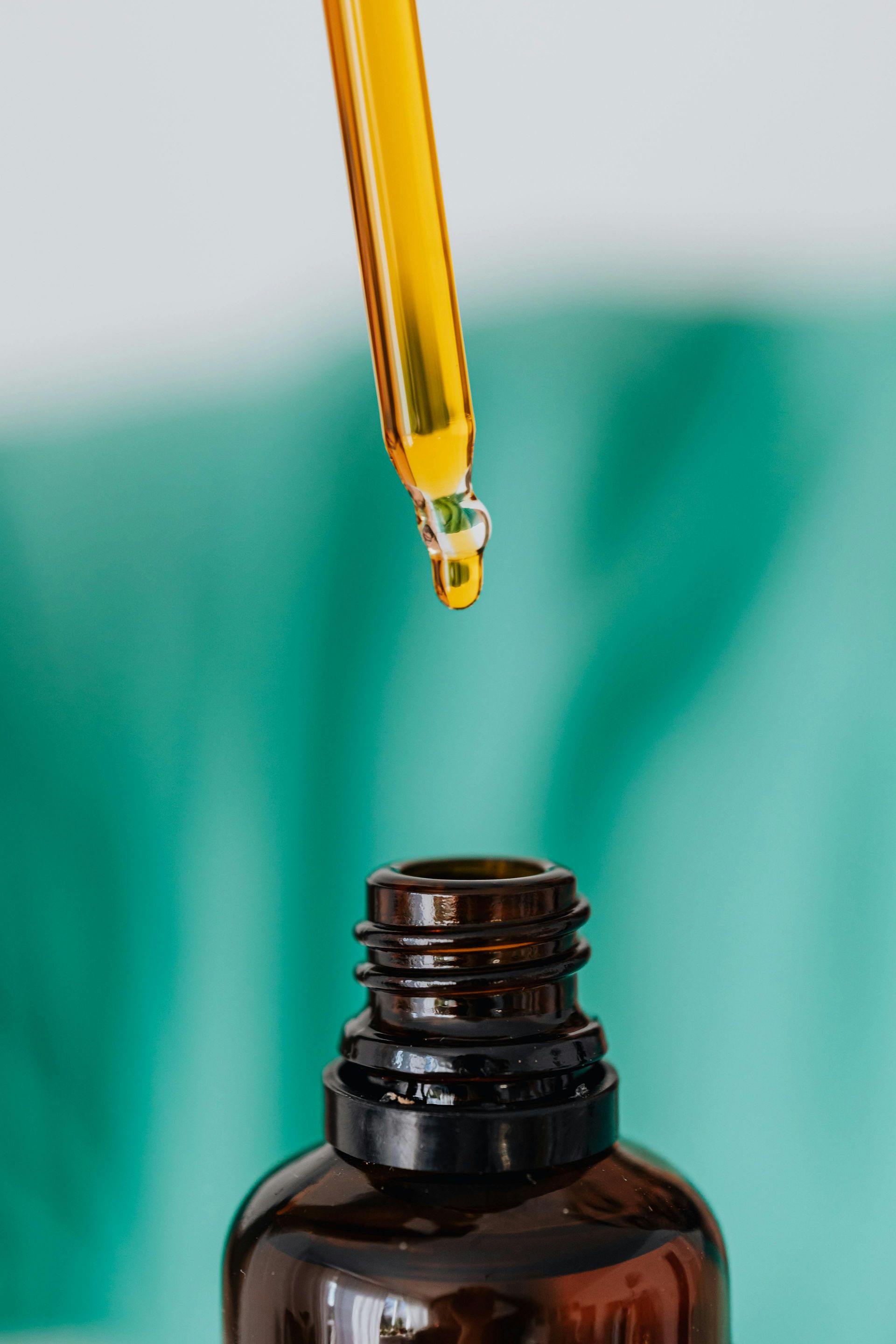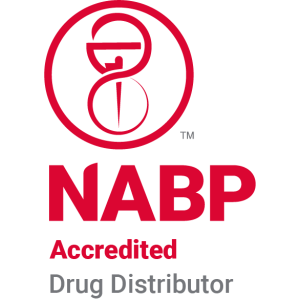How Long Can Patients Safely Use TPN?
Understanding TPN Duration and Safety in Clinical Practice
Total parenteral nutrition (TPN) is a critical intervention for patients with impaired gastrointestinal function, providing essential nutrients directly into the bloodstream. As medical advancements extend survival rates for many relying on TPN, understanding how long patients can safely continue this therapy is vital. This article explores the clinical guidelines, risks, monitoring strategies, and factors influencing the safe duration of TPN use, helping clinicians and patients make informed decisions.
Baseline of TPN Use and Patient Demographics

Overview of TPN therapy and patient populations
Total parenteral nutrition (TPN) is a method of delivering nutrients directly into the bloodstream through a central catheter, bypassing the digestive system. It is primarily used for patients with gastrointestinal conditions that impair digestion or absorption, such as short bowel syndrome, inflammatory bowel disease, or after major abdominal surgery. TPN provides a balanced mixture of fluids, proteins, sugars, vitamins, and electrolytes, tailored to meet individual nutritional needs.
Patients requiring TPN can be in various settings, from hospitals to home care. While some need short-term nutritional support during recovery, others require long-term or even permanent therapy. The decision to initiate TPN depends on factors like the severity of intestinal failure, nutritional status, and overall health condition.
Prevalence of long-term and permanent TPN use in the US
In the United States, approximately 40,000 people receive TPN therapy at home. Roughly half of these patients depend on long-term or permanent TPN, which indicates a significant reliance on this form of nutritional support for chronic conditions. Long-term TPN management involves careful monitoring to prevent complications and ensure adequate nutrient delivery.
Common indications for TPN initiation
TPN is indicated in cases where the digestive system cannot be used effectively. Common reasons for starting TPN include gastrointestinal obstructions, inflammatory bowel diseases, post-surgical complications like fistulae, and certain cancers. It allows nutritional support when oral or enteral feeding is not feasible or sufficient.
How is TPN administered?
You may receive your TPN continuously (24 hours per day) or cycled over a set number of hours, depending on your doctor's instructions and your tolerance. Cyclic TPN can improve quality of life by allowing periods without infusion, aiding in mobility and comfort.
| Aspect | Details | Additional Notes |
|---|---|---|
| Duration | Short-term (days to weeks) | Usually in hospital or recovery phase |
| Long-term use | Weeks, months, or lifetime | Usually administered at home |
| Common patient conditions | Short bowel syndrome, severe Crohn’s disease, cancer, post-surgical needs | Tailored to individual medical needs |
| Risks | Infections, blood clots, metabolic imbalances | Requires monitoring and care |
Understanding the basics of TPN use helps contextualize its role in managing complex medical conditions, offering a vital nutritional option for those unable to rely on their digestive tract effectively.
Guidelines and Duration of TPN Therapy

What are the typical guidelines for the duration of TPN therapy?
The length of TPN treatment depends heavily on the patient's condition and response to therapy. In hospitalized settings, TPN is often used for short-term nutritional support, generally lasting about a week to ten days, until the patient's gastrointestinal function improves or alternative feeding can be established.
For patients requiring long-term nutrition, especially those with chronic conditions such as short bowel syndrome, inflammatory bowel disease, or cancer-related cachexia, TPN can be continued for weeks, months, or even indefinitely. Most patients on long-term TPN manage therapy at home, providing a level of independence and improving their quality of life.
Initial approval for TPN typically covers a period of up to three months. This timeframe allows healthcare providers to evaluate the patient's nutritional status, response, and any potential complications. If the therapy proves beneficial and no unacceptable adverse effects occur, the duration can be extended—sometimes up to six months or longer—based on ongoing assessments.
How is TPN therapy monitored and adjusted?
Regular monitoring is essential to ensure safety and efficacy. Blood tests are routinely performed to assess electrolyte levels, liver function, blood glucose, and markers of infection or inflammation. These results guide adjustments to the TPN formulation, including glucose concentration, electrolyte balance, and the types of fats or proteins included.
Monitoring also involves checking for complications such as bloodstream infections, catheter thrombosis, and metabolic imbalances. Preventive protocols, like ethanol lock techniques, are employed to reduce infection risks.
The multidisciplinary team—comprising nutrition support specialists, physicians, and nurses—closely oversees therapy adjustments. Tailoring the nutritional composition to the individual's specific needs helps maintain optimal health outcomes while minimizing potential risks.
In conclusion, the management of TPN therapy hinges on personalized treatment plans, regular monitoring, and flexible adjustments to support patient recovery and quality of life.
Long-Term Survival and Outcomes

How long can patients on TPN expect to survive?
Patients relying on total parenteral nutrition (TPN) can have varying life expectancy depending on their condition and overall health. Research shows that approximately 65% to 80% of TPN-dependent patients survive for at least three years.
In detail, the general survival rates at different intervals are promising: about 88% remain alive after one year, 74% after three years, and around 64% after five years. These statistics highlight that many patients can continue with life-sustaining nutrition for years, especially when managed properly.
For those initiating TPN for the first time, about 58% survive roughly 1.5 years. However, long-term mortality remains significant, often influenced by age, underlying illnesses, and care settings. Despite these risks, most deaths tend to result from the primary disease rather than direct complications from TPN.
Is TPN considered a form of life support?
While TPN is vital for delivering nutrition when the digestive system cannot function properly, it is generally not classified as a form of life support. Classic life support refers to interventions that sustain basic vital organ functions such as breathing, heartbeat, or kidney filtration. These include mechanical ventilation, dialysis, or cardiopulmonary resuscitation.
In contrast, TPN solely provides essential nutrients intravenously, bypassing the gastrointestinal tract. It is crucial for maintaining nutritional status and quality of life in patients with severe digestive impairments but does not directly support or replace vital organ functions.
Therefore, although TPN can be life-saving and essential for certain patient populations, particularly those with chronic or severe gastrointestinal diseases, it is not typically categorized under the traditional spectrum of life support measures. Instead, it represents a specialized nutritional therapy tailored to individual needs.
How does TPN affect patient quality of life?
Long-term TPN therapy can significantly impact a patient's quality of life. Many patients using TPN at home report a quality of life comparable to those on dialysis, with some adapting well to the routine.
One approach that can enhance well-being is administering TPN overnight, allowing patients to sleep during infusions and engage in daily activities. This flexibility helps improve sleep quality and overall satisfaction.
However, patients also face challenges, including the risk of infections, catheter-related complications, and emotional or physical burdens associated with ongoing treatment. The presence of a central catheter and the need for regular monitoring add to the complexity.
Research continues to focus on improving safety, reducing infection risks through preventive protocols, and developing better catheter technology. Using a team-oriented approach involving specialists like dietitians, nurses, and physicians can help optimize care, reduce complications, and support better quality of life.
Overall, with proper management and support, patients on long-term TPN can maintain meaningful daily lives, although careful attention to potential complications and emotional well-being remains essential.
Risks and Complications of Prolonged TPN Therapy

What are the risks and common complications associated with long-term TPN use?
Long-term total parenteral nutrition (TPN) therapy involves administering nutrients directly into the bloodstream, bypassing the digestive system. While it provides essential nourishment for patients with impaired gastrointestinal function, it also carries certain risks that require careful management.
One of the most common issues is infection, especially bloodstream infections resulting from catheter-related bloodstream infections (CRBSIs). These infections can lead to sepsis if not treated promptly. Vascular access problems are also prevalent; patients may experience blood clots, catheter occlusion, or vascular injury. These access issues can impact the safety and effectiveness of TPN therapy.
Liver complications are significant concerns, particularly with long-term use. They include fatty liver (steatosis), cholestasis, inflammation of the gallbladder (cholecystitis), and gallstones. In severe cases, liver damage can progress to liver failure, highlighting the need for regular liver function monitoring.
Metabolic disturbances are frequent and can be serious. Patients may develop hyperglycemia (high blood sugar), hypoglycemia, refeeding syndrome (a metabolic disturbance that occurs when nutrition is reintroduced too quickly), hypertriglyceridemia, and electrolyte imbalances such as sodium, potassium, or magnesium abnormalities. Close metabolic monitoring helps mitigate these risks.
Additionally, long-term TPN can lead to metabolic bone disease, including osteoporosis and osteomalacia, partly due to deficiencies in vitamin D and minerals like calcium and phosphorus. Manganese toxicity, which can affect neurological function, is also a concern. Continuous assessment of nutritional adequacy and mineral levels is essential.
To reduce these risks, a multidisciplinary team—including dietitians, physicians, and nurses—must regularly monitor patients. Preventive strategies such as ethanol lock protocols can lower bloodstream infection risks. Ongoing research aims to develop safer catheter technologies, optimize TPN formulations, and improve infection prevention measures.
In summary, while TPN is life-saving for many, its long-term use requires vigilant management to prevent and control complications. Regular assessments and a coordinated care approach help ensure optimal outcomes and enhance patient safety.
Indicators for Safely Discontinuing TPN

What are the indicators for safely stopping TPN therapy?
Patients receiving Total Parenteral Nutrition (TPN) can be considered for discontinuation when certain clinical and laboratory parameters suggest adequate recovery of their gastrointestinal function and nutritional status. Typically, the decision to wean off TPN depends on several factors including the patient’s overall stability and progress.
Clinical parameters for weaning
Clinicians assess whether the patient has regained sufficient ability to tolerate enteral nutrition. Key signs include maintaining a stable weight, absence of significant gastrointestinal symptoms such as vomiting or diarrhea, and improved wound healing. The patient’s general condition, including vital signs and physical strength, also guides the decision.
Biological markers indicating improvement
Laboratory tests provide important insights into nutritional improvement. These include increased serum albumin and prealbumin levels, normalization of electrolyte balances, and stable blood glucose levels. Additionally, markers like C-reactive protein (CRP) can help evaluate inflammation and recovery.
Assessment of nutritional status
Regular nutritional assessment involves both biochemical markers and physical examinations, including weight tracking, muscle mass evaluation, and assessment of hydration status. A comprehensive nutritional plan ensures the patient can meet their energy and nutrient needs without TPN support.
When these parameters collectively indicate sufficient gastrointestinal function and nutritional stability, clinicians can develop a plan to safely transition the patient to enteral or oral nutrition, reducing dependence on TPN. This strategy aims to improve quality of life and decrease risks associated with long-term intravenous feeding.
Search for more guidance
For detailed criteria and specific protocols, healthcare providers often refer to clinical guidelines and research articles by searching “Criteria and indicators for TPN weaning.” Proper assessment is vital to ensure safety and success in discontinuing TPN therapy.
Monitoring and Managing TPN Therapy Effectively

What are the management strategies for TPN safety?
Managing total parenteral nutrition (TPN) safely requires a coordinated approach involving a dedicated healthcare team. This team typically includes nutrition support specialists, gastroenterologists, surgeons, dietitians, pharmacists, and nurses. Together, they ensure that TPN is tailored to the patient’s specific needs, with continuous assessment and adjustments.
Routine blood work and nutritional assessments form the backbone of safe TPN management. Regular testing helps monitor for potential complications such as blood sugar imbalances, liver function abnormalities, and electrolyte disturbances. These evaluations guide modifications to the TPN formulation, optimizing nutritional support and minimizing risks.
Preventive strategies are crucial to protect patients from infections, a common complication associated with central venous catheters used in TPN. One effective measure is the ethanol lock protocol, which involves instilling a small amount of ethanol into the catheter when it is not in use. This practice reduces the risk of bloodstream infections by eradicating bacteria and fungi.
Close monitoring also involves observing for signs of blood clots, mechanical issues with the catheter, and metabolic imbalances. Early detection of these problems is vital for prompt management, reducing the likelihood of serious complications.
Implementing these safety protocols requires a multidisciplinary team effort, emphasizing ongoing education and adherence to best practices. By doing so, healthcare providers can improve clinical outcomes, prevent avoidable adverse events, and support the patient’s overall well-being during long-term TPN therapy.
Future Directions and Research in TPN Safety and Efficacy

Innovations in catheter technology
Advances in catheter technology are crucial to reduce TPN-associated complications such as bloodstream infections and mechanical failures. Recent developments include improved catheter materials and coatings that resist bacterial colonization and thrombus formation. The introduction of ethanol lock protocols, which involve instilling a solution of ethanol into the catheter lumen between uses, has been shown to significantly lower infection rates. Future innovations may include smart catheters equipped with sensors to monitor for early signs of infection or clot formation, enabling timely intervention.
Development of safer formulations
Research efforts are also focused on creating safer TPN formulations. This includes the optimization of lipid emulsions, such as fish oil-based fats, which may help improve liver health and reduce inflammation. Additionally, advancements in glucose and electrolyte management aim to prevent metabolic imbalances like refeeding syndrome and liver complications. Personalized nutrition plans based on individual metabolic responses and genetic factors are anticipated to improve outcomes and reduce adverse effects.
Priority areas for clinical research
Key areas of ongoing research include infection prevention methods, the effectiveness of new catheter technologies, and the development of guidelines for long-term TPN management. Investigating the impact of infusion timing and composition on quality of life, especially for patients receiving night-time infusions, remains important. Moreover, exploring the potential benefits of intestinal transplantation for those with poor TPN tolerance could offer alternative solutions. Overall, multidisciplinary approaches, integrating technological, nutritional, and clinical strategies, are vital to enhancing the safety and effectiveness of TPN therapy.
| Area of Focus | Current Developments | Future Goals |
|---|---|---|
| Catheter Technology | Anti-bacterial coatings, sensors, ethanol lock use | Smart, self-monitoring catheters |
| TPN Formulations | Fish oil-based lipids, metabolic optimization | Personalized, safer nutrient mixes |
| Infection Prevention | Improved protocols, sensor-guided detection | Minimize bloodstream infections |
| Long-term Management | Quality of life studies, infusion schedule optimization | Enhance patient comfort and outcomes |
Balancing Benefits and Risks in Long-Term TPN Use
While TPN provides life-sustaining nourishment for patients unable to utilize their gastrointestinal tract, its long-term use demands meticulous clinical oversight to mitigate risks and complications. Survival prospects have improved significantly, yet the therapy remains associated with serious potential hazards. Ongoing research and a multidisciplinary approach are crucial for optimizing TPN strategies, ensuring that patients enjoy the best possible quality of life while minimizing adverse outcomes.
References
- TPN Life Expectancy: How Long Can Someone Live on ...
- Limited long-term survival after in-hospital intestinal failure ...
- Parenteral Nutrition: What it Is, Uses & Types
- Total Parenteral Nutrition (TPN) After Intestinal Transplant
- Improving Outcomes with Parenteral Nutrition - PMC
- Guidelines on Parenteral Nutrition, Chapter 11 - PMC
- Complications - Total Parenteral Nutrition













